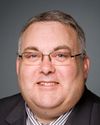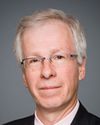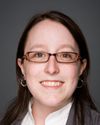Mr. Chairman, committee members, I'm very pleased to be appearing once again before you. This is the second time that I have made an appearance since leaving my position. I can recall some very interesting exchanges during my previous appearance. As always, I feel that it is a privilege to be able to appear before the people who represent Canadians after an election. This is, in my opinion, a very great honour.
I was eager to accept the invitation that was extended to me on Tuesday at noon. I would like to point out that I may not be able to answer all the questions that you may have. If that is the case, I would like the clerk to note them and I will provide you with a response in writing, if you wish, or in person if that is of greater interest to you.
The documents that I have had the opportunity to read, without doing so on an in-depth basis, obviously include Bill C-20, with its many scenarios, depending on the date of adoption, as well as the testimonies provided last Tuesday when Minister Uppal and Mr. Marc Mayrand, my successor, appeared before you. I also had an opportunity to read my 2005 report and I looked at seat distribution for 2001 and 1991.
I would also like to remind you that when I worked at the office during the 1990s—I do not recall the exact date—the chief electoral officer had suggested that the number of seats be limited to about 300. At that time there were 301 ridings and people were worried about this number rising. Moreover, yesterday, someone quoted Mr. Harper at the time.
In addition, the redistribution exercise was put on hold at one point, effectively disrupting all of the work. This is something to be avoided if at all possible. Once a committee has begun its work, it should continue without interruption, without new data, without any change in data, until everything has been completed.
In my view, with respect to the bill that is before you, with respect to three matters, with respect to the shorter timeframes, the seven months instead of the year to get ready, we did it. I remember well Mr. Martin, the Prime Minister at the time, wanted to do an election within six months. I had to tell him I couldn't do it before seven, even though the law allowed me 12. Seven was the shortest, and we were able to achieve it.
The 30 days instead of 60 and the 10 months instead of 12 came out of presentations, representations made by the commissions themselves, because we had post-mortems and we had questions. The 30-day minimum is a minimum. It does not mean that you've cut everybody else off.
These were ideas emanating from the commissions themselves that we wanted to act on.
I will just mention that one of the reasons why all of this becomes very possible is the very high-performing computers that now exist for cartography, for example, for utilizing StatsCan data, skimming off what you need in order to help the commissions. Whereas it used to take two months to prepare a series of maps, it can now take half a day. With respect to the formula itself, we've heard what the chief statistician said. It's obvious to me that a new number has been designed in order to do the in-between provinces. The way the indexing formula for future redistribution exercises works is that it will be the average of provincial population growth.
That will have the impact of slightly lowering the quotient, compared to if you used the total population, the average Canadian population overall, which means then that the seats will remain slightly higher, which is what is sought by this exercise.
The resulting allocation from Bill C-20, in my view, with Ontario getting 15 seats, Alberta 6, B.C. 6, and Quebec 3, is exceedingly good.
The west, in essence, and Ontario, while not getting exactly what they should, will certainly be much better represented, in terms of what democracy is about. Insofar as Quebec is concerned, Quebec will remain right on, not overrepresented, not underrepresented, based on the total number of seats. This has been one of the objectives for a very long time. I think Mr. Reid was alluding to this in his testimony yesterday. It has been around for a long time that Quebec was a pivotal province. There are those that are underrepresented. There are those that are overrepresented. Quebec is right there. This approach is one, certainly, that I am in agreement with.
Thank you, Mr. Chairman.










